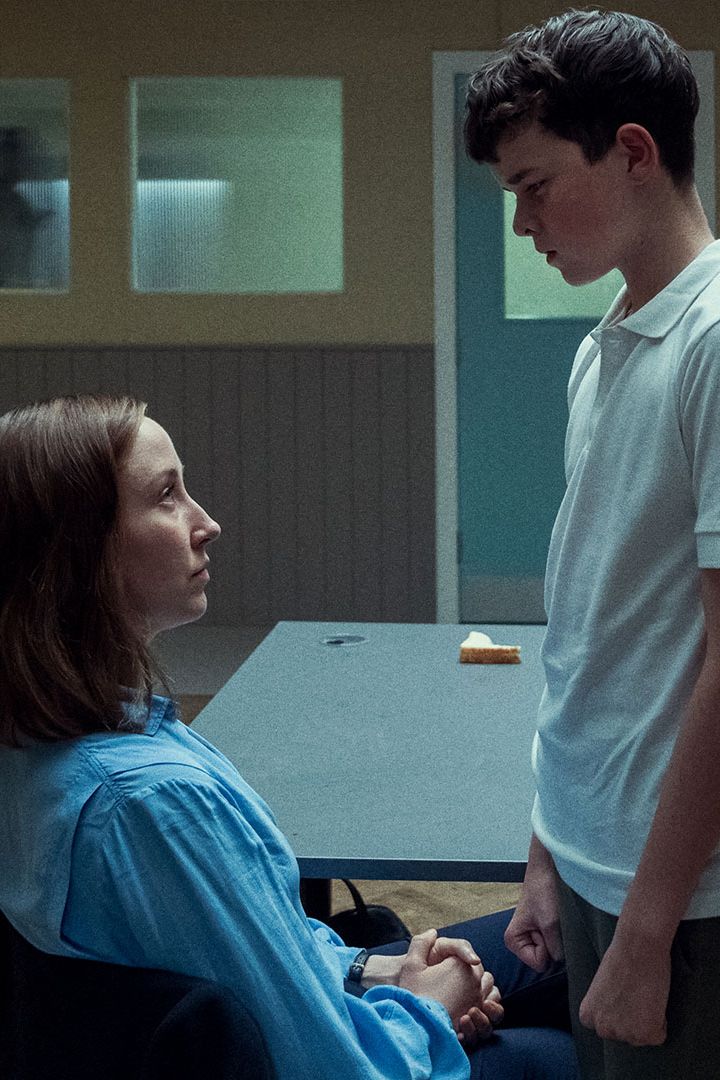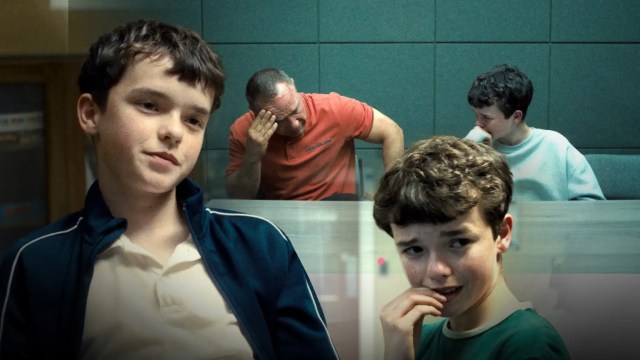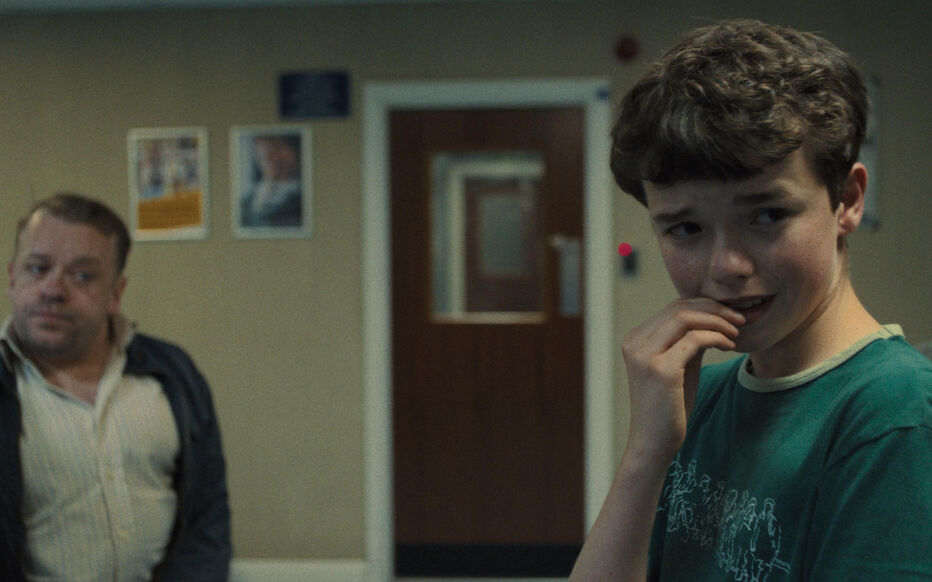Is Adolescence Based on a True Story? The Truth Behind Netflix’s Controversial Drama
When Netflix released Adolescence, audiences were quick to ask one burning question: is adolescence based on a true story? The crime drama gripped viewers with its raw portrayal of youth violence, social media influence, and the dark undercurrents of modern teen culture. But the truth is more layered than a simple yes or no.

Is Adolescence Based on a True Story or Pure Fiction?
The short answer is no—Adolescence is not directly adapted from a single real-life event. However, the creators drew heavy inspiration from real incidents involving teenage knife crimes in the United Kingdom. This means that while the plot and characters are fictional, the themes and tragedies it depicts echo situations that have sadly occurred in reality.
Real-Life Inspirations Behind the Drama
The show’s co-creator explained that the seed for the series was planted after reading about a teenage girl fatally attacked in a small UK town. Similar cases appeared in headlines, creating a chilling pattern that could not be ignored. This is where the question is adolescence based on a true story gains complexity—because while there’s no single “true” story, there are many real ones feeding its narrative.
Knife Crime Statistics and Social Impact
In the UK, knife-related offenses involving minors have surged in recent years. The show uses this reality as a backdrop, blending fact with fiction to make its story feel uncomfortably real. The result? A drama that feels authentic enough for viewers to believe it could be a documentary, even when it isn’t.
The Creative Process and Narrative Choices
The production team researched juvenile crime cases, consulted youth workers, and studied online communities that influence young minds. This method ensured that when viewers ask is adolescence based on a true story, the creators can honestly say: “It’s not one story—it’s many stories stitched together.”
Exploring Online Influences
One of the most striking aspects of the show is its portrayal of the “manosphere” and online radicalization. These digital spaces often feed into toxic masculinity and extremist attitudes among young boys, providing a subtle yet powerful undercurrent to the series’ plot.
Why the Question Matters
Audiences love to connect with a story’s authenticity. When people ask is adolescence based on a true story, they’re not just curious—they’re searching for a deeper emotional connection. Knowing that the events are inspired by real-life tragedies amplifies the emotional weight of the viewing experience.
Comparisons with Other “Based on a True Story” Works
Netflix is no stranger to dramatizing reality. In fact, other films and series like The Conjuring True Story and The Blair Witch Project have walked the fine line between fact and fiction. Similarly, American Sniper sparked debates over what was real and what was dramatized.
The Cultural Message Behind the Show
At its core, Adolescence is not just about crime—it’s about the social systems, peer pressures, and hidden digital influences that shape young lives. This makes the answer to is adolescence based on a true story even more nuanced, because it’s grounded in truths about society itself.
From Fiction to Social Awareness
By merging fictional characters with real-world issues, the series forces viewers to confront uncomfortable realities. It challenges parents, educators, and policymakers to think about how they can prevent such tragedies before they occur.
Final Verdict: Truth Woven with Fiction
So, is adolescence based on a true story? Technically, no—but it’s built upon a foundation of real events, cultural trends, and social anxieties. It may not recount a single historical case, but its authenticity comes from mirroring the world we live in today.
If you finish the series still asking is adolescence based on a true story, that’s exactly what the creators intended. They want viewers to blur the lines between drama and reality—and perhaps to look at the real adolescents in their own lives a little differently.
For more details about the series and its themes, visit Wikipedia’s page on Adolescence.
Real Crimes That Mirror the Netflix Drama

Ever since the release of Netflix’s gripping series Adolescence, viewers have been asking one burning question: is adolescence based on a true story? While the show is officially fictional, it reflects unsettling realities drawn from real-life crimes and tragedies involving young people. The events depicted in the drama feel authentic because they echo real cases that have shocked communities around the world.
Is Adolescence Based on a True Story or Just Inspired by Reality?
The creators have clarified that Adolescence is not adapted from a single, documented case. However, the writing was influenced by patterns of youth violence, gang involvement, and social media manipulation that are painfully real. This means that even though the characters and storyline are fictional, they have roots in genuine tragedies that made headlines.
UK Knife Crime Cases That Parallel the Show
In the United Kingdom, knife-related violence among teenagers has become a national concern. Over the past decade, multiple incidents have mirrored the tension and danger portrayed in Adolescence. These real cases make audiences wonder, is adolescence based on a true story, or is it simply a mirror reflecting society’s darker side?
The 2019 London Schoolyard Attack
In 2019, a 15-year-old student was attacked in a London schoolyard by a peer carrying a knife. The assault, which left the victim critically injured, was fueled by social media disputes—an element heavily explored in Adolescence. This chilling similarity makes the fictional events feel eerily plausible.
Cases of Peer Manipulation Leading to Violence
Several real-life cases involve teens being manipulated into committing violent acts. Just like in the series, perpetrators were often influenced by online groups or toxic peer circles. This element strengthens the connection for those asking is adolescence based on a true story.
The “Group Chat Murder” Case
In Manchester, investigators uncovered that a teenage assault was planned entirely through a group chat. Participants egged each other on until someone acted, much like the peer pressure dynamics in Adolescence.
International Crimes with Similar Patterns
While the show is set in the UK, its themes resonate globally. Similar crimes have occurred in other countries, often involving social media influence, gang culture, and troubled family dynamics. Stories like these often make viewers reflect on is adolescence based on a true story—even if the events took place far from the show’s fictional setting.
Australia’s Youth Gang Stabbings
In Melbourne, a series of gang-related stabbings among teens shocked the city. The perpetrators were heavily involved in online communities that glorified violence, echoing the show’s portrayal of radicalized youth.
Media Comparisons to Other “True Story” Dramas
Netflix and other streaming platforms have released similar gritty dramas that blur the line between fact and fiction. For example, Snowfall draws from the crack epidemic in Los Angeles, while Waterfront portrays political corruption inspired by real events. Even fantasy-leaning shows like Untamed borrow thematic elements from history.
Why This Connection Matters
By linking fiction to reality, these shows deepen their emotional impact. When audiences repeatedly ask, is adolescence based on a true story, it’s because they recognize fragments of truth within the fiction.
The Role of Social Media in Real Crimes
One of the strongest parallels between the series and actual cases is the influence of social media. In both reality and fiction, online interactions can escalate conflicts, spread harmful ideologies, and embolden young people to commit acts they might not consider face-to-face.
From Online Threats to Real Violence
Police reports in various countries show a growing number of youth assaults preceded by online threats or cyberbullying. This trend is a core element of Adolescence, which explores how the internet shapes—and sometimes warps—the teenage mind.
Community Responses to Youth Violence
Real-world tragedies often lead to public outcry, awareness campaigns, and policy changes. In the UK, youth outreach programs have been implemented to curb knife crime. For viewers who ask is adolescence based on a true story, these efforts reinforce the idea that the show reflects pressing real-life issues.
Art Imitating Life—and Life Learning from Art
Sometimes, a show like Adolescence can spark important conversations that real events alone might not. By dramatizing reality, it captures the public’s attention and keeps the topic alive in the cultural conversation.
Final Thoughts: The Line Between Fact and Fiction
So, is adolescence based on a true story? Not exactly. But it draws heavily from real patterns of youth crime, making it a haunting reflection of our world. The show serves as both entertainment and a warning, blurring the lines between fictional storytelling and lived reality.
For more background on the real-life inspirations and cultural themes behind Adolescence, visit Wikipedia’s page on Adolescence.
Exploring the Filming Locations of Netflix’s Adolescence

Ever since its release, Adolescence has captivated viewers with its gritty realism and haunting atmosphere. While many wonder is adolescence based on a true story, others are equally fascinated by where the show was filmed. The choice of filming locations played a huge role in making the drama feel authentic, immersing viewers in the world of troubled youth, gang tensions, and the stark realities of urban life.
From Script to Screen: Building the World of Adolescence
The production team behind Adolescence wanted the setting to feel alive—almost like another character in the story. While the narrative is fictional, much like the debate around is adolescence based on a true story, the backdrop was carefully chosen to echo real neighborhoods where similar social issues exist. Filming took place in multiple UK cities, blending gritty realism with cinematic flair.
Urban Streets That Feel Uncomfortably Real
Several exterior shots were filmed in less-polished parts of London and Birmingham. Narrow alleyways, graffiti-covered walls, and dimly lit underpasses gave the show its raw, urban texture. This attention to detail makes viewers feel as though they’re walking the same streets as the characters—strengthening the connection for those asking is adolescence based on a true story.
Community Housing Estates
The housing estates featured in the series were chosen for their authentic look. The production team sought places that hadn’t been overused in other TV dramas, ensuring a fresh yet realistic feel. These settings added a sense of confinement and tension to the plot, reflecting the pressures faced by the show’s characters.
School Settings with a Realistic Edge
School scenes were filmed in an actual disused secondary school in the Midlands. This allowed the crew to adapt classrooms and corridors without disrupting a functioning institution. For viewers curious about is adolescence based on a true story, these authentic educational settings reinforced the idea that the events could happen in any real school.
Using Real Classrooms for Emotional Impact
The worn-out desks, faded wall posters, and echoing hallways lent the scenes a sense of authenticity. Actors commented that working in a real school environment helped them fully embody their characters’ emotions.
Night Shoots and Lighting Choices
Many pivotal scenes in Adolescence take place at night. Filming on location in real neighborhoods after dark allowed the production to capture natural shadows, streetlamp glows, and the unpredictability of city life. This visual realism deepens the immersion for those still debating is adolescence based on a true story.
Balancing Safety and Authenticity
Night shoots in certain districts required extra security and coordination with local authorities. While the crew wanted authenticity, they also needed to ensure the safety of cast and staff during filming.
Waterfront and Industrial Backdrops
Some sequences feature industrial landscapes, shipping yards, and canal paths—symbolic of both isolation and transition. These areas were carefully chosen for their visual metaphor, much like other dramas inspired by reality such as Untamed, which also uses environment as a narrative tool.
Symbolism in Location Choice
The production team has noted that each location in Adolescence was meant to say something about the characters’ journeys—whether it was a bustling street representing chaos or a quiet canal path symbolizing isolation.
The Role of Weather in Filming
The UK’s unpredictable weather added an unplanned layer of realism. Rain-slicked streets and overcast skies enhanced the moody atmosphere. This element works hand-in-hand with the narrative’s tension, pushing viewers further into the debate: is adolescence based on a true story?
Adapting to Real-World Conditions
Instead of waiting for perfect weather, the crew embraced the natural environment. This choice allowed them to capture moments that felt spontaneous and authentic.
How Locations Shape the Story’s Perception
By choosing real neighborhoods over studio-built sets, the creators blurred the line between fiction and reality. This fuels ongoing discussions around is adolescence based on a true story because the setting feels lived-in, as if the drama were documenting real lives.
Viewer Connection Through Familiar Spaces
For UK viewers especially, seeing familiar architecture and street layouts makes the events hit harder. It’s not some far-off, imagined place—it’s their own world reflected on screen.
Final Thoughts: Locations as Silent Storytellers
While Adolescence may not answer definitively the question is adolescence based on a true story, its locations tell their own truths. They ground the drama in a believable reality, enhancing the emotional weight of every scene. From bustling city streets to quiet canals, every backdrop serves a purpose, reminding us that environment can be as influential as any character.
For more insights into the series and its production, you can visit Wikipedia’s page on Adolescence.
